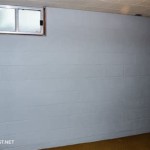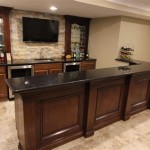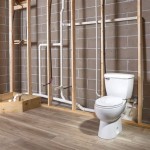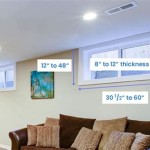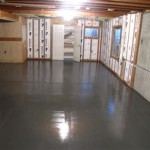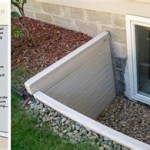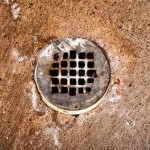What Is A Good Humidity Setting For Basement In The Summer?
Basements are susceptible to moisture problems, especially during the summer months when humidity levels are high. Excess moisture in a basement can lead to various problems, including mold growth, mildew, musty odors, and damage to belongings. Maintaining a proper humidity setting in your basement is crucial for creating a comfortable and healthy environment.
The ideal humidity level for a basement in the summer typically ranges between 30% and 50%. This range balances the need to prevent moisture build-up while ensuring a comfortable living space. It's worth noting that the specific humidity level might vary depending on factors such as the basement's size, insulation, ventilation, and local climate.
Understanding Humidity and Its Impacts
Humidity refers to the amount of moisture present in the air. High humidity levels can make a basement feel stuffy and uncomfortable. Moreover, excessive moisture can create a conducive environment for mold and mildew growth, which pose health risks, particularly to individuals with allergies or respiratory conditions. Mold can also damage building materials, leading to structural issues.
Conversely, excessively low humidity levels can cause dryness, leading to cracked walls, wood warping, and static electricity. These issues can also negatively impact the comfort and health of the basement environment.
Methods for Controlling Basement Humidity
Several methods can be employed to regulate humidity levels in a basement. Here are a few effective options:
1. Dehumidifiers
Dehumidifiers are the most common and effective way to remove excess moisture from the air. They work by drawing in humid air, condensing the moisture, and releasing drier air back into the environment. Dehumidifiers come in various sizes and capacities, so it's crucial to choose one suitable for the size of your basement.
When selecting a dehumidifier, consider factors such as the basement's square footage, the level of humidity you want to achieve, and the energy efficiency of the unit. Regularly clean the dehumidifier's filters to optimize its performance and prevent the growth of mold and bacteria.
2. Proper Ventilation
Adequate ventilation plays a vital role in controlling humidity. Proper ventilation ensures fresh air circulation, removing moisture from the basement. Open windows and doors when weather permits to allow for natural ventilation. Consider installing exhaust fans in areas prone to moisture buildup, such as bathrooms and laundry rooms.
Ensure that the basement's foundation has proper drainage to prevent water from seeping into the basement. Regularly inspect gutters and downspouts to ensure they are clear and diverting water away from the foundation.
3. Sealing Air Leaks
Air leaks often contribute to high humidity levels in a basement. Seal any cracks or gaps around windows, doors, and foundation walls to prevent humid air from entering the basement. Caulk, weatherstripping, and foam sealant are effective materials for sealing air leaks.
Inspect the basement for any cracks in concrete floors or walls. Repair these cracks using a waterproof sealant to prevent moisture from seeping into the basement.
4. Moisture-Resistant Materials
Consider using moisture-resistant materials in your basement finishes. Opt for waterproof paints and sealants for walls and floors. Choose materials that resist mold and mildew growth, such as ceramic tiles, vinyl flooring, and moisture-resistant drywall.
Store items off the basement floor to allow for proper air circulation. Avoid storing items directly against walls, as this can trap moisture and create a breeding ground for mold and mildew.
5. Maintaining a Dry Environment
Minimize the use of water in your basement. Avoid letting laundry dry in the basement, as this can contribute to high humidity levels. If you have a basement bathroom, ensure it has proper ventilation to prevent steam from accumulating in the air.
Regularly dry any wet items in the basement immediately to prevent them from becoming a source of moisture.

Hot In Here How To Maintain Ideal Indoor Humidity Summer

Window Condensation And Humidity In Your New Home Pacesetter Homes

Relative Humidity Chart For Ideal In The House

A Guide To Controlling Nc Home Humidity Newcomb And Company

What Is The Ideal Basement Humidity Level Epp Foundation Repair

Moisture In Basements Causes And Solutions Umn Extension

Dehumidifier Setting Chart What Should Be Set At

Overview Dehumidification In The Basement Or Crawl Space

Fighting Basement Humidity In The Summer News And Events For Systems Inc

What Should A Basement S Humidity Be
